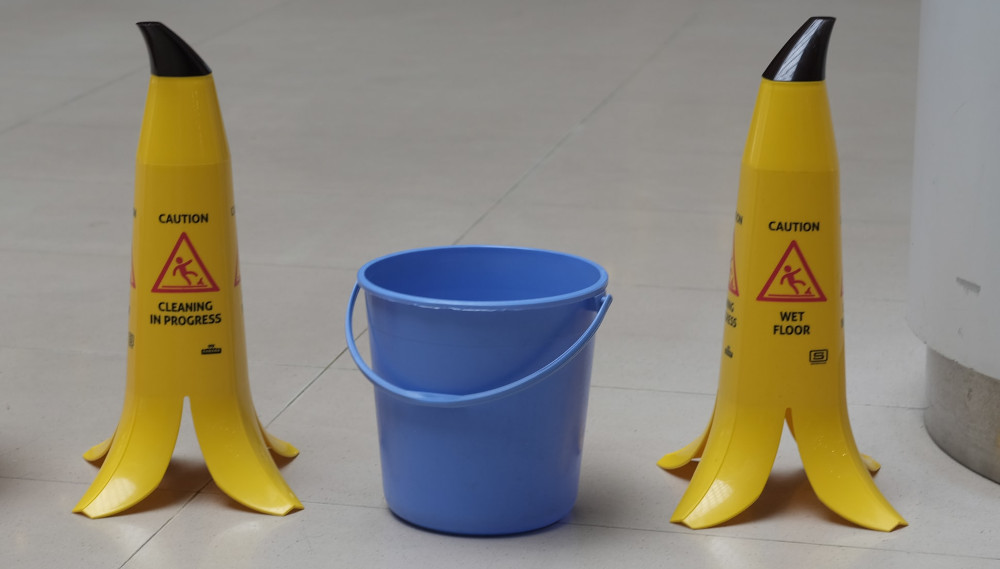From Slip to Safety: A Comprehensive Guide to Personal Injuries in Construction, Including Slip and Fall Incidents
In the dynamic realm of construction projects, safety is paramount. The bustling nature of these sites, with heavy machinery, elevated structures, and various materials in transit, creates an environment where potential hazards lurk at every corner. The imperative to prioritize safety cannot be overstated. It is not merely a precaution but a fundamental commitment to the well-being of every individual involved in the construction process. Construction projects demand continuous vigilance, ensuring that safety measures are actively implemented and adhered to by every member of the team. Amidst the concrete and steel, the emphasis on safety transcends the physical components of the construction project, forming the backbone of a secure and productive work environment.

The Imperative of Safety in Construction Projects
In the dynamic realm of construction projects, safety is paramount. The bustling nature of these sites, with heavy machinery, elevated structures, and various materials in transit, creates an environment where potential hazards lurk at every corner. The imperative to prioritize safety cannot be overstated. Based on attorney Nicolas Lampariello, it is not merely a precaution but a fundamental commitment to the well-being of every individual involved in the construction process; construction projects demand continuous vigilance, ensuring that safety measures are actively implemented and adhered to by every member of the team. Amidst the concrete and steel, the emphasis on safety transcends the physical components of the construction project, forming the backbone of a secure and productive work environment.
Amidst the various hazards present on construction sites, continuous vigilance is paramount to ensure the well-being of every team member. The imperative to prioritize safety goes beyond being a precautionary measure; it is a fundamental commitment embedded in the essence of every construction project. Every individual, from laborers to project managers, actively contributes to maintaining a secure and productive work environment.
The Historical Context of Personal Injuries in Construction
Historically, the construction industry has been marked by a high incidence of personal injuries, often stemming from a lack of awareness, inadequate safety measures, and limited technological advancements. The evolution of safety in construction reflects a commitment to addressing these historical challenges. Early construction sites lacked the comprehensive safety protocols we have today, with accidents and injuries being a prevalent aspect of the industry. Over time, legal frameworks have evolved to hold construction entities accountable for ensuring a safe working environment, contributing to a shift in attitudes towards safety.
The Current State of Personal Injuries in Construction
Despite advancements, personal injuries persist in the contemporary construction landscape. A closer look reveals the multifaceted nature of these incidents, with slip and fall accidents emerging as a significant concern. Recent data underscores the prevalence of personal injuries in construction, with slip and fall incidents standing out as a notable contributor to these unfortunate events. Understanding the current state requires active engagement with safety data, prompting stakeholders to adopt proactive measures to mitigate risks.
Recent data underscores the prevalence of personal injuries in construction, with slip and fall incidents standing out as a notable contributor to these unfortunate events. Despite advancements in safety measures, a closer look at the contemporary construction landscape reveals that personal injuries persist, indicating the multifaceted nature of these incidents. This necessitates active engagement with safety data to prompt stakeholders to adopt proactive measures and mitigate potential risks.
The Role of Safety Technology and Regulations
In the present age, safety technology and regulations play a pivotal role in mitigating personal injuries in construction. The integration of advanced safety measures and adherence to stringent regulations are catalysts for change. From wearable safety devices to advanced monitoring systems, technology has revolutionized safety in construction, providing real-time insights and preventive measures. Stringent regulations guide construction practices, compelling stakeholders to adhere to standardized safety protocols, thereby ensuring a consistent commitment to worker well-being.
Technology has played a pivotal role in mitigating personal injuries in construction. The integration of advanced safety measures, such as wearable safety devices and advanced monitoring systems, has revolutionized safety, providing real-time insights and preventive measures. Additionally, stringent regulations guide construction practices, compelling stakeholders to adhere to standardized safety protocols and ensuring a consistent commitment to worker well-being.
Abounding in the Legal Intricacies of Personal Injuries in Construction
Navigating the legal intricacies surrounding personal injuries in construction is crucial. Understanding liability, workers' rights, and compliance with safety regulations forms a foundational aspect of addressing the aftermath of incidents. Legal perspectives delve into determining liability in personal injury cases, where factors such as negligence, adherence to safety regulations, and duty of care come into play. Knowledge of workers' rights is integral, empowering individuals to seek compensation and justice in the event of a personal injury.
Understanding the legal intricacies surrounding personal injuries in construction is crucial for stakeholders. It involves delving into legal perspectives that determine liability in personal injury cases, considering factors such as negligence, adherence to safety regulations, and the duty of care. Empowering individuals with knowledge of workers' rights becomes integral in ensuring they can seek compensation and justice in the event of a personal injury.

Conclusion: Paving the Way to a Safer Construction Future
In conclusion, "From Slip to Safety" serves as a navigational guide through the landscape of personal injuries in construction. The historical context underscores the journey from a hazardous past to a present where safety is a non-negotiable priority. The integration of safety technology and compliance with regulations showcases a commitment to forging a safer future for construction projects. Understanding the legal intricacies provides a comprehensive approach to addressing personal injuries, ensuring that accountability and justice prevail. As the construction industry advances, the commitment to safety must evolve in tandem, creating a culture where every individual, from laborers to project managers, actively contributes to a construction environment that prioritizes well-being above all.